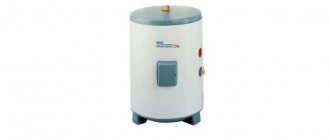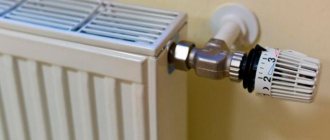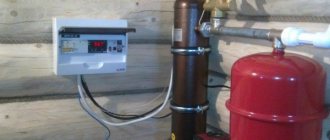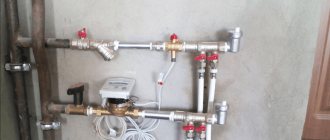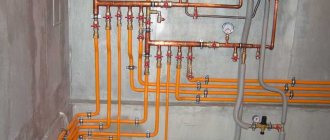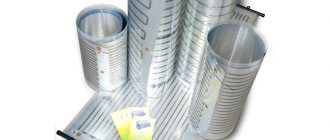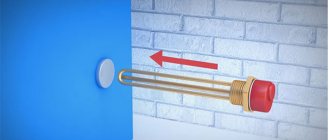Electric heating batteries have already occupied their niche in the heating device market. They are very popular among a certain category of consumers. After all, cottages and private houses often have to be heated with electricity. And in this regard, they have no equal.
But among electric heating radiators there is a category that includes energy-saving convectors. How do they differ from conventional heating devices, and what is the principle of energy saving? In order to understand this, it is necessary to compare two groups: conventional electric heating radiators and energy-saving ones.
Types of Electric Batteries
Externally, electric batteries are similar to bimetallic or aluminum radiators used in the construction of a water heating system. The difference is that they are connected through an outlet and have a control unit, and sometimes a remote control. They are divided into 2 groups:
- Liquid;
- Liquidless.
In the first group of electric batteries, the coolant is oil or water, heated by a tubular element. The peak consumption of most of these models is from 300 to 500 watts.
The heat exchange area is quite large due to the fact that the body is finned. Since aluminum has high thermal conductivity, the entire battery heats up evenly. Manufacturers assure that electric batteries operate in an economical mode due to the presence of microprocessor control.
Liquid vacuum electric battery on wheels
The arguments in favor of liquid-free electric batteries are that there is no threat of coolant leakage, they are safer and heating is faster.
What all these devices have in common is the presence of several elements that interact with each other. The entire existing model range can be divided into the following types:
- Oil-based, where the coolant is mineral oil;
- Vacuum;
- Convectors;
- Heat guns.
Nobo C4F10
I read reviews about electric heating convectors and settled on equipment from Nobo. Yes, it’s expensive, but I’m not used to saving on everything related to heating, especially electric. I have a miniature country house that my family uses exclusively for vacations. Convectors were installed here, and the old water heating with a liquid boiler was scrapped. Today the house is warm, electric convectors work great. When reading reviews, pay attention to expensive brands rather than rushing to inexpensive equipment with positive reviews. Our heaters have been operating for two years now, and during this time there has not been a single breakdown . There are minor shortcomings, but they are not so critical. My review is this: take Nobo electric heating convectors and you can count on high-quality heating.
Operating principle of oil radiators
The coolant in these types of radiators is mineral oil, which has good heat transfer. Often such electric batteries visually resemble simple cast iron ones. Their operating principle is also similar: more sections - more efficient heating.
Inside the radiator there are electrodes in the form of copper and galvanized plates placed in an electrolyte. An electric current passing through them heats the electrolyte, which transfers heat to the mineral oil, which, having a boiling point many times higher than that of water, heats the ribbed surface of the radiator. To prevent the coolant from overheating, the temperature is controlled using special systems.
Due to the fact that corrosion-resistant materials with an additional coating of a special film on the outside and inside are used to make the case, most batteries can be used in conditions of high humidity.
Oil radiator
The energy emitted by the surface of the battery heats the walls of the room, increasing the temperature inside the room. As excess moisture evaporates, the heat transfer coefficient decreases, therefore, heat loss decreases.
There are models equipped with temperature sensors that allow you to set and maintain a certain temperature, which significantly reduces power consumption. Some models have forced air circulation, which reduces the heating time of the room.
Attention! The selection of oil radiators is carried out according to the rule: from 100 to 110 W per 1 sq. m. premises.
Fuel consumption
When it comes to saving energy, consumers are primarily concerned with the question, what is the energy saving of this type of heating radiator? Again, a comparison will have to be made. To do this, let’s compare two brands of devices:
- the Cozy brand, well-known on the Russian market;
- and the no less popular Zilon.
The first model is an energy-saving battery, the second is a regular one.
So, the basis for selecting the power of any heating unit is a comparison of two indicators: heated area and thermal output. So, the optimal ratio is 100 W of heat per square meter of area, provided that the ceiling height in the house is 2.7-2.8 m.
Regular model
Zilon brand products are electric heating devices with a power of 2 kW, with which you can heat rooms with an area of 25 m². That is, to heat a house with a total area of 100 m², you will need four convectors with a total power consumption of 8 kW.
Economical device
To heat exactly the same house, you need 13 energy-saving Cozy brand radiators with a power of 0.25 kW each. In total, the power consumption will be only 3.25 kW. This is two and a half times less. But that's not all.
When the Cozy electric batteries are turned on, the devices operate in start-up mode until the normal room temperature set by you on the automation unit is reached inside the house. At this time, the rated power of 3.25 kW is consumed. After which the devices enter normal mode with reduced power consumption. The reduction is brought to 1.5 kW. Here's another savings of 2.5 times.
How vacuum electric batteries work
A more economical option compared to oil-based electric batteries are vacuum radiators. Their operation is based on heating a special liquid located in the lower part of the aluminum case, which easily evaporates and quickly spreads heat over the surface of the device. The peculiarity of the liquid filling the vacuum electric battery is its low boiling point - only 35 degrees C and a small volume - 500 ml.
The heat output of a vacuum electric battery is quite large - about 300 W for each section. When the battery is disconnected, it retains heat for a long time, because gas particles in a vacuum continue to move, although somewhat slower.
Vacuum electric radiator is a good option for economical heating
The set of heating devices includes emergency shutdown sensors and temperature regulators. The positive aspects of using vacuum radiators include:
- Easy installation;
- No need for auxiliary equipment;
- Nice design;
- Autonomy;
- Ability to regulate temperature in a wide range - 20-70 degrees C.
Attention! As a disadvantage, it should be noted that the vacuum battery cannot be tilted. It should stand on a perfectly flat surface.
Advantages and disadvantages
An electric heating battery has a number of advantages and disadvantages. Let's look at them in more detail in paragraphs.
Floor-standing electric radiator on wheels
The advantages of such electric radiators:
- Firstly, lower costs for the internal mechanism due to the needlessness of laying pipes. You will not need to call laying specialists, and this is also a saving.
- Secondly, quick installation. Both floor-mounted and wall-mounted electric radiators can be installed in a couple of minutes and can already function.
- Energy-saving electric heating batteries can heat various rooms, be it outbuildings or private homes.
- The devices operate silently, so you can sleep peacefully and without discomfort at night.
- Easy to operate. They do not require registration or maintenance fees. You just need to install the required number of heating elements and enjoy comfortable warmth, paying only for the electricity consumed.
- Easy to repair. If one heating device fails, nothing will happen to the functionality of the other radiators.
- Easy to adjust room temperature. At any time, idle batteries can be turned off or their heat supply intensity can be reduced.
- Easy to adjust radiator power. You can put economical wall-mounted electric heating batteries for your home together with floor-mounted ones; they will work perfectly together in automatic mode and adjust to the temperature.
- Environmental friendliness. This radiator has no harmful emissions and does not require a chimney.
- An equally important fact: in winter you will not have to drain the coolant, which usually freezes.
Eco electric heating batteries have the following disadvantages:
- Since the devices are high-power, they require good electrical wiring that can withstand heavy loads. Still, more than one heating battery will work from the mains.
- What many owners forget is that you can’t dry things on electric radiators! Whether it is electric heating batteries for a dacha, for an apartment, for an office, they must work in dry rooms.
- High costs for electrical energy. Electricity has always been considered an expensive resource, compared to, for example, gas.
- An electric wall and floor radiator, if it has an open heating element, burns air. In addition, atmospheric dust is burned.
Convector type radiators
The device is externally similar to an oil radiator, but its body is less convex and is equipped with two grilles - lower and upper. Cold air enters through the first, and the second, occupying 15 to 20% of the surface, is equipped with guide curtains and is designed to release heat.
The heating elements located inside the radiator are surrounded by metal plates, increasing the useful area of the heating elements. Electric heating elements are made from stainless steel. Their tubes with magnesite inside are hermetically sealed.
Heating using electric convectors occurs due to convective exchange according to the scheme: solid body - gas and convective-radiant propagation of heat, when its transfer is carried out both by a radiation source and by convection.
Convector radiator diagram
The advantages of this type of electric batteries are significant:
- High reliability. The design has no moving parts or coolant, which greatly increases the supply of resources;
- Availability of alternative installation options - permanently on the wall or installation on the floor if there are legs or wheels;
- Safe, convenient operation due to the presence of a thermostat and protection against fire and overheating. Even when the heating element is heated to 1000 degrees, the outer surface does not heat up by more than 65 degrees;
- There is no need to strengthen the power supply to the house and install grounding;
- Unlike other types of electric heating, they do not burn oxygen;
- The line includes models for use in conditions of high humidity;
- Autonomy;
- Efficiency 95%;
- High heating rate of heating elements - on average 30 seconds.
Convector-type electric batteries also have disadvantages:
- High power consumption, which makes their use irrational for heating large areas;
- Annual decrease in efficiency.
Electrolux ECH/L-1000 U
We moved to our own country house and decided to create electric heating here. We read reviews about convectors and settled on Electrolux products. It seems like a decent brand, but in practice everything turned out to be much worse. The rooms are warm and cold at the same time, there is an incomprehensible feeling from the air. They also crackle, which is incredibly unnerving at night and interferes with sleep. If there is a short-term loss of electricity, an automatic start does not occur - you know that the further you are from big cities, the more problems there are with the power grid.
An electric wall convector, like any other heating device, is necessary to create a comfortable microclimate in an apartment in winter.
Often central heating services in apartments are quite unstable, and a convector is an alternative way to heat rooms not only in apartments, but also in dachas, kiosks, garages or pavilions.
The temperature maintained by the convector is regulated in two ways - manually or automatically.
Heat guns
The device, called an electric heat gun, has such a simple design that some even make it themselves. The main components are a heating element and a fan.
The stainless steel body without welds is made in the form of a cylinder, which, due to its external resemblance to a gun, gave the device its name. Air from outside enters through special grilles in the housing. Inside, a heating element raises its temperature to the required value, and it again goes outside through a fan system. To put it simply, we can say that a heat gun is the same fan, but it produces hot air rather than cold.
Design of an electric heat gun
The electric gun operates from both a two- and three-phase network. Heating element - heating element or spiral. Overheating of the device is excluded due to the presence of a special thermostat that automatically turns off the power when the set temperature is reached. This allows significant energy savings.
The performance of the device depends on the volume of air blown out: the larger it is, the faster the room will warm up. The following facts testify in favor of a heat gun:
- Easy operation;
- Compact and light weight;
- Versatility. Can be used for various purposes - from accelerating the drying of surfaces during repairs to heating;
- Fast heating;
- Absolute safety.
Attention! In rooms where air humidity is high, the use of electric heat guns is prohibited.
There are also heat guns that do not have a fan system. Such devices operate under the influence of infrared radiation and warm up not the entire room, but individual sectors.
Ballu BEP/E-1000
Reading reviews about wall-mounted electric heating convectors, I more than once noticed positive words about Ballu equipment. And many stores praised them. But in reality, I bought unreliable junk that broke within the first week of work. They replaced it under warranty, but the troubles did not end - there was nothing to breathe in the room, the air seemed to be fried in a frying pan, very unpleasant. Whenever I have the opportunity, I will definitely leave my reviews about this electric convector. And at night you can hear it making noise - crackling, grinding. It feels like there are mice in the underground, although they have never been there.
Calculation of electricity consumption by an economical convector
Recently, manufacturers have been producing convectors with improved characteristics and call them economical. Whether using them really saves electricity will be shown by calculation.
For example, let’s take a well-insulated room with an area of 15 square meters. m., heated by an economical convector - Noirot with a power of 1500 W. We set the temperature to 20 °C, at an outside temperature of -5 °C.
Convector Noirot Spot-E3
Judging by the manufacturer's data, the room will warm up in 20 minutes. For initial heating the following is used:
0.33x1.5 = 0.5 kWh.
In order for the set temperature to be maintained, it is necessary for the convector to operate for 7 to 10 minutes. In one hour:
0.15x1.5 = 0.225 kWh.
8 hours of operation consumes electricity
0.225x8+0.5 = 2.3 kWh.
If we take into account that in the absence of people you can use the economical mode - from 10 to 12 degrees, the electricity consumption will be:
0.08x1.5x16 = 1.92 kWh.
In total, per day you will spend:
2.3+1.92 = 4.22 kWh.
Since a conventional convector consisting of several elements consumes from 6.8 to 7.5 kWh, then, according to the manufacturer, 2.58 - 3.28 kWh is saved.
NeoClima Futuri 1.5
When choosing wall-mounted convector heaters for my dacha, I didn’t want to overpay for functions I didn’t need. Therefore, I was quite satisfied with the good and inexpensive convector NeoClima Futuro 1.5. Its power is enough to heat a small room measuring about 15 square meters. The only thing I didn’t like was that after a month this heating device broke down - I had to return it to the store and wait for a refund (a new one was delivered only a week later). In general, the impression was not the most favorable, but now the equipment is working properly. Reviews on the Internet said that the temperature sensor was lying, but I was happy with everything.
